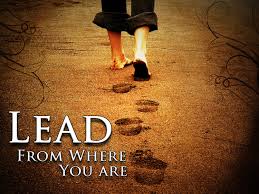
Have you ever noticed that actors of Asian and Western ethnic backgrounds are often stereotyped? Asians businesspersons are portrayed as reserved individuals, who are serious and incapable of taking a joke while those individuals from the west are portrayed as boisterous, idiotic and incapable of being serious. My first reaction to the viewing of this clip from the 1986 film, “Gung Ho” was to recognize the blatant stereotypes. Under the direction of Ron Howard, my assumption is that the stereotyped characters and situations will reveal universal truths about individuals and organizations.
While the above reaction was sociological in perspective, my next reaction was to consider the angle of the camera and the placement of characters in the scene. What was the director trying to say? What was the purpose of the exaggerated stereotypes beyond making the audience laugh? Why were some characters dressed in clean professional clothing sporting conservative haircuts? The majority of the characters in the open courtyard are sloppy, unshaven and wearing dirty or messy clothing. Reframing the scene through the lens of an organizational practitioner is a new lens for me. It is one that is useful when considering how an organization works and where to begin when instituting change.
The Four-Frame Approach to Understanding Organizations, as described by Gallos (2006) asks the OD practitioner to consider the structural, human resource, political and symbolic components of an organization. My small group looked at the symbolic components of the organization asking what the group exercise might mean to those involved, how did each individual interpret it and it what way might these exercises represent the values and beliefs of the organization?
This organizational event, where employees are gathered in a large, open space as a group, could become a part of the group’s culture, where the event expresses what’s important to the group.Through a symbolic frame, this activity, ritualistic in nature, is not what is most important. What is important is what is means to the people in the organization. By the comedic way in which the character initially react to the cal esthetics, one can only imagine the dialog that transpires in the next scene.
The selection, Reframing Complexity in Gallos, was very useful to me when writing the Change Agent Interview paper. At times, I found it very challenging to remove the human resource lens, where I attend to people. My natural inclination is to consider how the individual fits within the organization, as well as how the culture of the organization reflects the needs and values of the individual. Looking at the organization through just one frame presents a rather skewed image of the organization.
Remembering to “frame” details to tell about the change event forced me to engage the skills of a practitioner more intentionally by looking at how the underlying assumptions behind the change event was a logical path to maintain the structure of the organization. The school system in the change event as an organization exists to achieve the goals established by the State Department of Education. The “Four-Frame Approach to Understanding Organizations” encourages me to wear each lens of Change Agent Practioner, structural, human resource, political and symbolic when analyzing a change event. All four frames present a complete image of the organization.
When considering this scene, I wonder how Michael Keaton is going to ensure the integration of all of the group efforts in the manufacturing plant. Will the factory workers pull together as a group in order to meet the goal of producing 15,000 cars in one month? They’ll certainly need to operate as a “machine,” with a clear division of labor.

